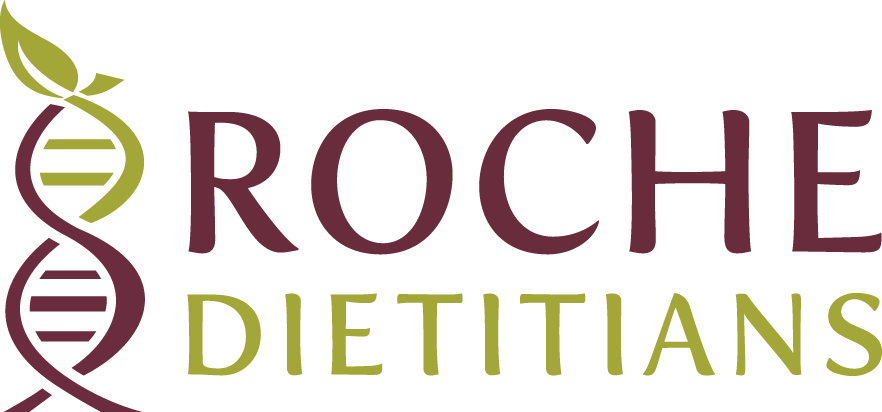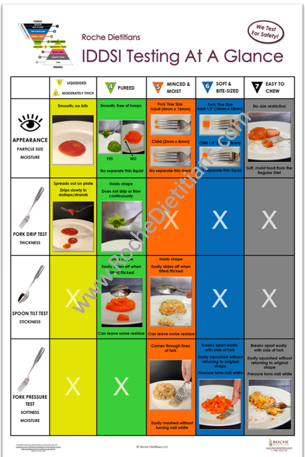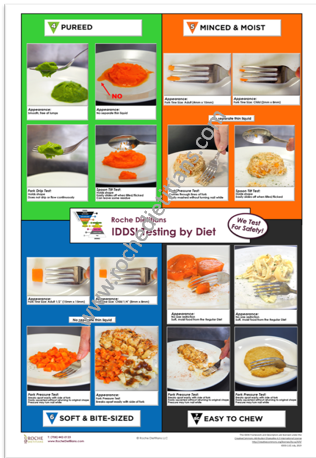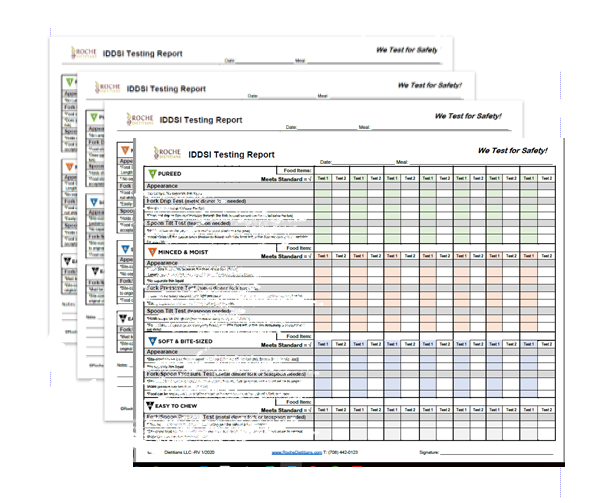Your Ultimate Guide to IDDSI
Since its launch, IDDSI, or the International Dysphagia Diet Standardization Initiative, has brought about far-reaching changes to how our industry serves texture modified foods and drinks. In fact, there are 128 countries worldwide engaged with IDDSI, and it is translated into over 50 languages. It aims to be culturally sensitive, measurable, and applicable to individuals of all age groups in all care settings.
IDDSI is a standardized way to define food texture and drink thickness. It is designed to improve safety during eating and drinking for those with chewing and swallowing problems.
We all celebrate having these new standards, however, there are some complexities in shifting from a less detailed model to a more robust system. It can be challenging to try to figure out all of the moving parts. That’s why we created this guide — to help you begin your IDDSI journey amidst these complexities. Here’s what we’re going to cover:
1. Who IDDSI is for
2. The IDDSI food and drink levels
3. The IDDSI testing methods
4. Resources for implementing IDDSI
Who IDDSI is for
IDDSI was created to serve individuals who have chewing and swallowing problems. These individuals have a swallowing disorder called dysphagia, which means they cannot safely chew or swallow food. Because of this, someone with dysphasia has an increased risk of choking and/or aspiration (breathing into the lungs particles of food or drink) when eating and drinking. There are over 590 million people in the world who live with dysphagia.
The IDDSI standards make sure that those with chewing and swallowing problems are protected from choking and aspiration. Individuals with dysphagia typically have texture modified diets or thickened drinks to allow them to safely chew and swallow. A doctor or speech-language pathologist will evaluate a patient and determine which food texture and drink thickness is needed. An individual may also be on a texture modified diet if they are not able to safely bite off or chew food but do not necessarily have dysphagia.
Both thickened drinks and texture modified diets make swallowing easier and help prevent choking. Thickened drinks make swallowing easier, and texture modified foods make chewing and swallowing easier. There is an IDDSI level for varying needs of chewing and swallowing capabilities.
READ MORE: IDDSI? An Expert Dietitian Gets You Started
The IDDSI food and drink levels
The IDDSI framework, shown above, is a visual representation of each level, which is represented by a distinct name, color, and number. It shows different texture modified food and thickened drink levels that were created for individuals who have varying degrees of chewing and swallowing problems.
There are eight different texture modified food and thickened drink levels on the IDDSI framework.
These food and drink levels range from Level 0 for thin drinks to Level 7 for regular texture foods. Each level is linked with a specific name, color, and number.
The top section of the IDDSI framework is all about foods. All IDDSI food levels are represented by the triangle with the tip pointed down.There are five levels for foods: Level 3, Level 4, Level 5, Level 6, and Level 7.
Level 3 is Liquidized. Level 4 is Pureed. Level 5 is Minced & Moist. Level 6 is Soft & Bite-Sized. Level 7 includes two texture levels: Regular and Regular Easy to Chew .
Note: Although IDDSI Regular Easy to Chew (Level 7) has a separate name, it is still part of IDDSI Regular (Level 7). IDDSI Regular Easy to Chew is not a separate IDDSI texture level. Easy to Chew is the Regular Diet with changes to make it soft and easier to eat. From here on, we will be referring to the IDDSI Regular Easy to Chew level as the IDDSI Easy to Chew level.
The bottom section of the IDDSI framework is all about drinks. All IDDSI drink levels are represented by the triangle with the tip pointed up. There’s five levels for drinks: Level 0, Level 1, Level 2, Level 3, and Level 4.
Level 0 is Thin. Level 1 is Slightly Thick. Level 2 is Mildly Thick. Level 3 is Moderately Thick. Level 4 is Extremely Thick.
There are two IDDSI levels that are connected on the IDDSI framework between the food and drink levels: IDDSI Level 4 (Pureed Foods and Extremely Thick Drinks). This is because they have similar flow/textural characteristics and descriptions. But it’s important to note that just because they are connected, it doesn’t mean that they needs to be prescribed together. An individual’s ability to manage food and drinks must be assessed independently.
For example, an individual may require their drinks to be thickened to IDDSI Level 3 (Moderately Thick) due to poor oral control but they are able to manage Level 5 (Minced & Moist) foods. By assessing their ability to manage food and drinks separately, they would be prescribed Level 5 (Minced & Moist), Level 3 (Moderately Thick).
Want to learn more about each IDDSI level? See our posts on each level:
IDDSI Pureed (Level 4)
IDDSI Minced & Moist (Level 5)
For more information about the IDDSI food and drink levels, you can visit the IDDSI framework definitions guide on IDDSI.org.
Need a reference chart to remind you of the details of each IDDSI level? See our free downloadable charts on each level:
IDDSI Pureed (Level 4) Chart
READ MORE: Best Practices for Starting with IDDSI During the Era of COVID-19
The IDDSI testing methods
When working with the IDDSI standards, we always test for safety. IDDSI uses testing methods to make sure that foods are at an individual’s prescribed level before they are served and protect them from choking.
These tests are as simple as using your eyes, a fork, and a spoon. They are an important step in improving safety during eating and drinking. This will ensure that someone with chewing or swallowing problems is served the right food.
Each level uses a specific set of tests:
IDDSI Pureed (Level 4): Check for Appearance, Fork Drip Test, and Spoon Tilt Test
IDDSI Minced & Moist (Level 5): Check for Appearance, Spoon Tilt Test, and Fork Pressure Test
IDDSI Soft & Bite-Sized (Level 6): Check for Appearance and Fork/Spoon Pressure Test
IDDSI Easy to Chew (Level 7): Check for Appearance and Fork/Spoon Separation & Pressure Test
All IDDSI thickened drink levels: IDDSI Flow Test
Here are the IDDSI testing methods:
Check for Appearance
Checking for appearance is important because there’s a lot we can learn from simply looking at a food. The test varies depending on the IDDSI texture level, but generally the test checks for moisture and particle size. Some of the things we look for depending on the IDDSI level are whether the food is smooth, is the right size, and has no thin liquid.
Fork Drip Test
The IDDSI Fork Drip Test assesses thickness. Place a small amount of food on a fork and make sure the food holds shape on the fork and does not drip or flow continuously.
You will also want to look at what may be flowing through the fork tines. If a short tail of pureed food flows below the fork tines, then the pureed food is thick enough, and it passes the fork drip test.
If the pureed food flows or drips continuously through or below the fork tines or prongs, it’s too thin and does not pass. If it does not hold shape on the fork, it also does not pass the test.
Spoon Tilt Test
The Spoon Tilt Test looks at the stickiness of the food. Place a small amount of food on a spoon, then tilt it to watch the food slide off the spoon. If necessary, you can gently flick the spoon to help the food come off. The food should slide off fairly easily. It’s okay if there is a thin film of food residue left on the spoon. Food may also spread or slump slowly on the plate.
Fork Pressure Test
The IDDSI Fork Pressure Test checks the softness and moisture of the food. Place a small amount of food on a plate, and try to mash the sample of food with a metal dinner fork. The amount of pressure we may use depends on the IDDSI texture level.
When testing foods for IDDSI Minced & Moist (Level 5), we apply a lighter amount of pressure onto the fork. It should be light enough so that the pressure does not turn the nail white. Also, when pressed with a fork, the food particles should easily separate and come through the lines of a fork.
Whereas, when testing foods for IDDSI Soft & Bites-Sized (Level 6), we may apply even more pressure onto the fork, and it may be enough to turn the nail white. In addition, when you lift up the fork, the food should not return to its original shape. Also, with another sample of food, use the side of the fork to make sure the food cuts or breaks apart easily.
IDDSI Flow Test
The IDDSI flow test is used to test each drink level for accuracy. This test shows how thick a drink is based on the amount of liquid that flows through a 10 mL syringe within 10 seconds.
It demonstrates how quickly a drink flows and is important because faster-flowing drinks are harder to swallow.
The IDDSI Flow test is inexpensive, accessible, and easy to perform. It requires only a 10 mL syringe and a timer. For more information on the IDDSI Flow Test, visit the flow test page on IDDSI.org.
READ MORE: How Dysphasia Chefs and Dietitians Around the World Are Teaming Up to Tackle IDDSI
Resources for implementing IDDSI
Roche Dietitians “We Test for Safety” IDDSI Training Program
We’ll be the first to acknowledge that learning about IDDSI is not a simple process. From the new food and drink levels to the testing methods, it is a significant undertaking to learn these standards, and you need an ongoing process to train your team. That’s why we created the Roche Dietitians “We Test for Safety” IDDSI Training Program.
This program will train your staff on everything they need to know about IDDSI. From an overview of IDDSI with our Introduction course to comprehensive courses on each IDDSI level, your team will be well-versed in all things IDDSI. They will also get to practice testing with our hands-on experiences.
But the Roche Dietitians “We Test for Safety” IDDSI Training Program is not just about sharing facts. It’s about creating a culture of safety in your foodservice organization. This program will give you all of the tools you need to develop a strong IDDSI culture among your team, which will keep individuals safe from choking.
Online training may be a new experience for your organization. Our online training is easy to access and simple to use. Your team can watch it on demand whenever they’re available. This format allows your team to truly digest the information at the pace that works best for your organization.
We have the same value for excellence as you, and we have been committed to excellence throughout the entire time we created this course. For over a year, we have worked at putting together this training for your team so that you don’t have to.
The Roche Dietitians “We Test for Safety” IDDSI Training Program is now available for purchase. If you’re not ready to purchase training yet, take the beginning steps of implementing IDDSI with our IDDSI posters and IDDSI testing report (below).
IDDSI posters
It’s important to empower your team to implement the IDDSI standards and always test for safety. Our IDDSI posters are easy-to-understand guides you can hang in your production and service areas. They serve as a helpful reference for your staff as they use the IDDSI testing methods on a daily basis.
Our first poster, the IDDSI Testing at a Glance poster, gives an overview of the IDDSI testing methods that correspond with each IDDSI level. Our second poster, the IDDSI Testing by Diet poster, serves as a reference guide for testing. This poster has a section for each IDDSI level and includes pictures of the corresponding testing methods.
IDDSI testing report
As you use the IDDSI testing methods, you’ll need a way to track your results. That’s where our IDDSI testing report comes in. This easy-to-use IDDSI audit tool reinforces IDDSI testing principles and allows your team to test multiple IDDSI levels and food items all on one sheet.
Your team will be empowered to test the safety of all food items by following the appropriate steps and ensuring all food items meet the IDDSI standard for each food and drink level.
IDDSI Community Group on LinkedIn
The world is changing rapidly, and we as an industry need to build community. Our new IDDSI Community Group on LinkedIn helps you connect with others interested in IDDSI, including dietitians, speech language pathologists, food service leaders, industry partners, and other professionals working with IDDSI.
The IDDSI Community group is a place to build relationships with other professionals, share ideas, ask and answer questions, and exchange resources about IDDSI. The group welcomes members from around the world.
READ MORE: The Five Key Components You Need to Train Food Service Workers on IDDSI
Wrapping up your guide to IDDSI
The IDDSI framework helps us follow new standards that ensure the foods and drinks we are serving individuals with chewing and swallowing problems are safe. This helps protect individuals from choking.
It’s key to remember to always test for safety. The IDDSI testing methods are as simple as using your eyes, a fork, and a spoon. Testing helps us make sure our foods and drinks meet the IDDSI standards. After all, each of us has a role to play in keeping individuals safe.
As you implement IDDSI in your organization, we invite you to share your IDDSI success stories with us, either by posting them in the comments or sharing them on our IDDSI Community Group on LinkedIn.
We’ll update this page with your stories so others can be encouraged. It’s vital that we support each other on our IDDSI journeys, and your IDDSI success stories are an important part of guiding others along their path.
As you develop your IDDSI knowledge, it can be an intimidating process to learn all that you need to know. We’re here to help you, and we encourage you to use our resources and join our community so that you’re never alone on the journey.
This guide will be updated on an ongoing basis. We invite you to refer back to this page for new tips and information on IDDSI.
Looking for more advice on IDDSI? Download our free resource, Top 17 Tips for IDDSI, to learn where to start with IDDSI and why IDDSI makes things easier in the long run. You'll also receive our monthly Industry Resources email newsletter.
Note: This site is NOT the official IDDSI website. Please refer to www.IDDSI.org for the most current information and resources.







